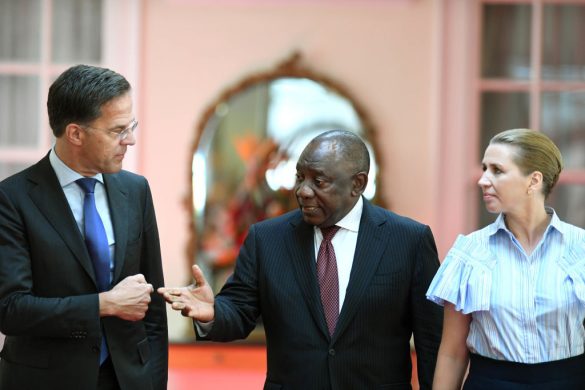Omskårne mænd har væsentlig mindre risiko for at få aids. Derfor ville Swazilands regering i samarbejde med en amerikansk organisation omskære 80 procent af landets mandlige befolkning. Men mændene sagde nej tak.
MBABANE, 13 May 2013 (IRIN): It was an ambitious plan to circumcise (omskære) the majority of men in Swaziland, an effort to reduce the risk of HIV transmission in a country with the world’s highest HIV prevalence. How could it have gone wrong?
“First they told me that circumcision will not really protect me against HIV. Then they tell me that I cannot have sex for some weeks or months after circumcision. I told them ‘fusaki’ [get out]!” Eric Dlamini, a 22-year-old law student, told IRIN.
These views are at the heart of the failure of the Accelerated Saturation Initiative (ASI) to achieve more than a fraction of its targeted goal, the circumcision of 80 percent of Swazi males between ages 15 and 49 within a year.
The programme, a partnership between the Ministry of Health and Social Welfare and the US-based Futures Group, was launched in 2010, and extended to 30 March 2012 when initial efforts showed a failure to achieve targeted results. But only about 20 percent – or 32,000 – of the targeted demographic were circumcised through the programme.
US$15.5 million was spent on the programme, or $484 per circumcised male.
“We do not believe [ASI] was a failure but an additional prevention measure that is contributing to the overall combination efforts to end the HIV/AIDS pandemic in the country,” US Embassy in Swaziland spokesperson Molly Sanchez Crowe told the local press.
Imposed from outside?
Male circumcision has been scientifically proven to reduce a man’s risk of contracting HIV through vaginal intercourse by as much as 60 percent. Follow-up studies have found that the effectiveness of male circumcision in HIV prevention is maintained for several years.
Government health officials, like Minister of Health Benedict Xaba and Khanya Mabuza, the acting director of the National Emergency Council on HIV and AIDS (NERCHA), have noted that ASI taught the country important lessons and left behind several clinics and other health infrastructure.
But a year after the programme ended, Swazi health officials are still trying to figure out what went wrong. Health workers, who spoke to IRIN on the condition of anonymity, pointed out that the programme was hastily implemented. They wondered why the short implementation time was not extended. Ending the programme, they fear, may suggest to international donors that the country is a hopeless cause.
“We have been struggling with HIV for 20 years, and we see programmes come and go. Some are fads… and some are not well thought out. The Swaziland programme came from the outside. The health ministry was willing to go along because there was money there. But it was imposed,” said Thandi Mduli, an HIV testing officer in Manzini.
Officials with health-oriented NGOs admitted to IRIN they are “terrified” of criticizing an initiative funded by the “mighty” US President’s Emergency Plan for AIDS Relief (PEPFAR) and involving the global population control NGO Population Services International (PSI).
The ASI programme was an attempt to duplicate in Swaziland the circumcision successes seen in Kenya and other countries, without apparently doing the pre-campaign ground work. Kenya has carried out an estimated 477,000 circumcisions since its programme started in 2008, according to the government.
In 2011, UNAIDS and PEPFAR launched a five-year plan to have more than 20 million men in 14 eastern and southern African countries undergo medical male circumcision by 2015.
Reasons for failure
Læs hele artiklen: http://www.irinnews.org/Report/98023/Circumcision-plans-go-awry-in-Swaziland















